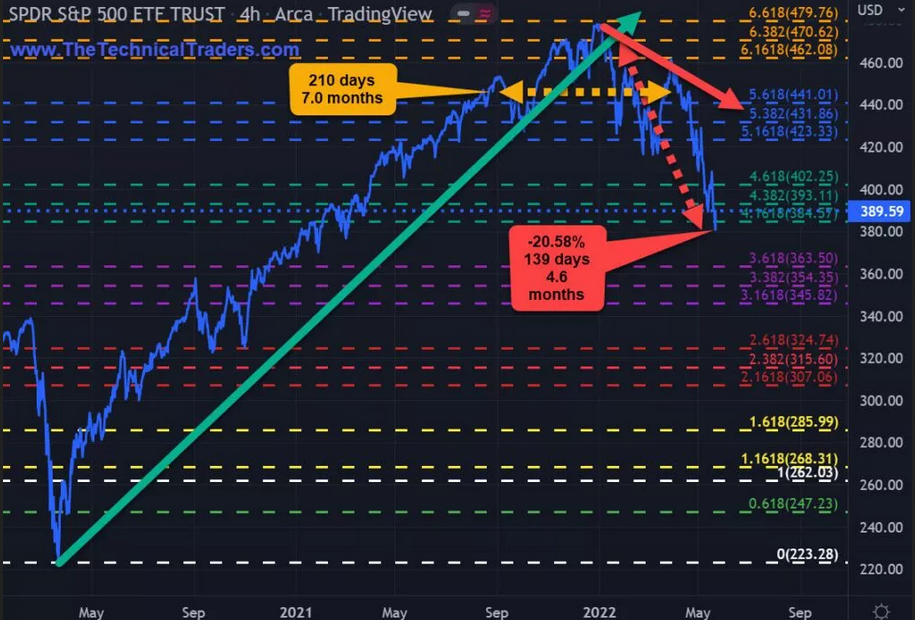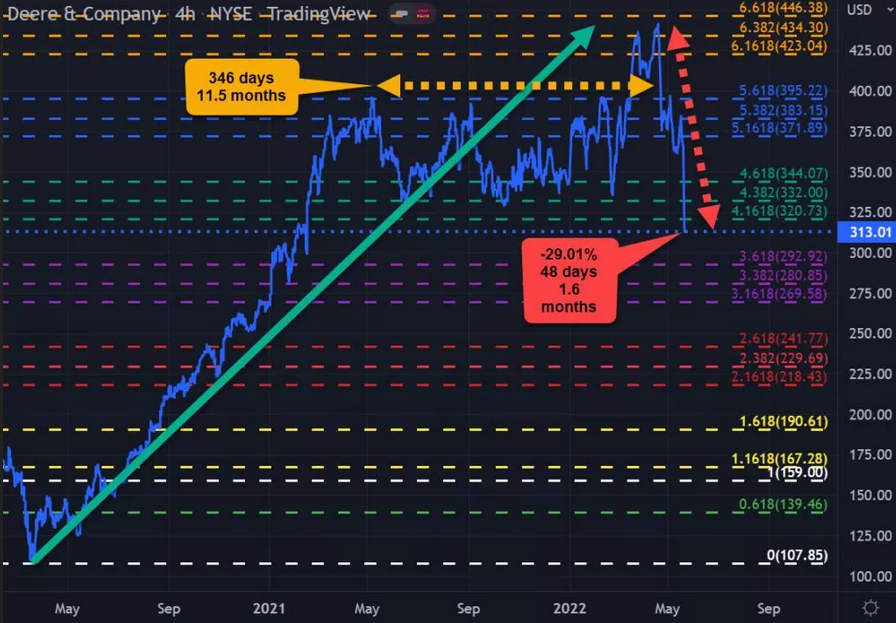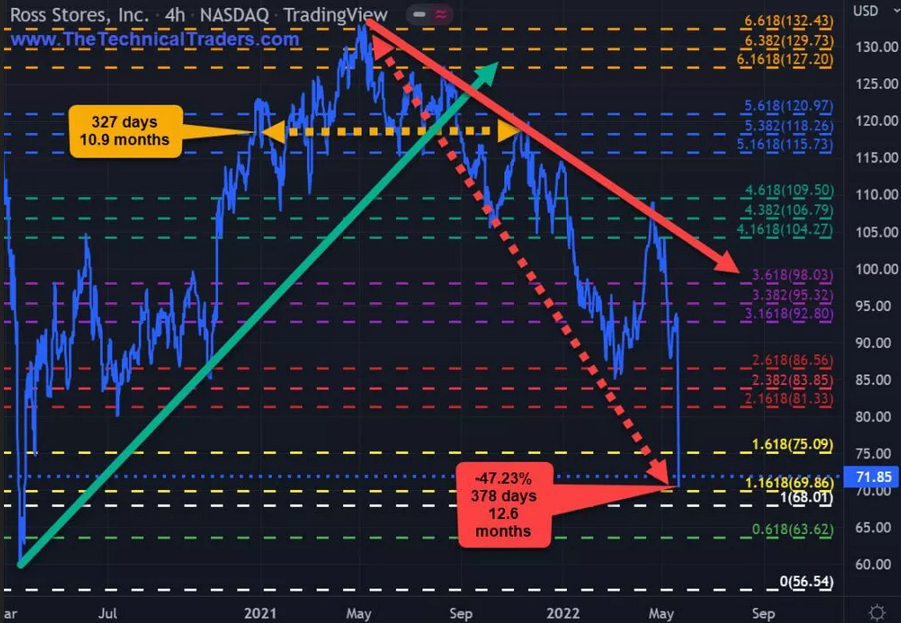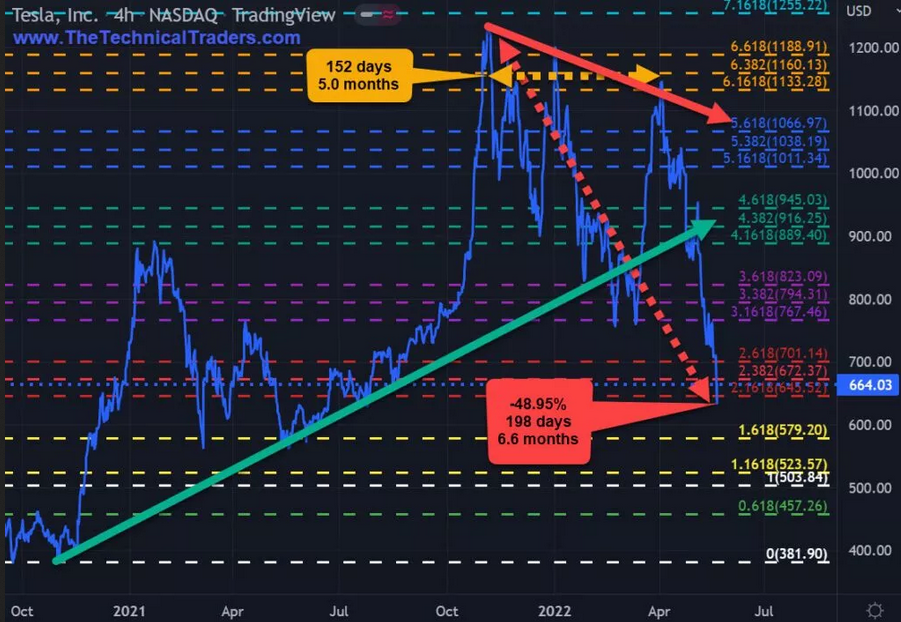Traders have access to an overwhelming amount of market indicators. But does a trader really need any of these indicators to be successful at trading?
At the end of the day, the price determines our loss or profit. Therefore, we should focus our research on price action rather than time lagging indicators or market fundamentals.
Following and trading price simply means that the market tells the trader what to do and not the other way around. Being one with price deposits money into a trader’s account, whereas fighting price withdraws money out of a trader’s account.
The price action is “Always” right as it does not care what a trader’s opinion or bias is.
Bull markets can go on for many years, but bear markets happen unexpectedly and can quickly destroy a trader’s profits or even their account. Bear markets move with a greater velocity than bull markets and they are accompanied by high volatility due to investor emotions (Fear, Greed, & Hope).
The simple definition of a bear market is a drop in price of -20% or greater from its recent maximum peak. Therefore, once a market drops -by 20% or greater, it is a bear market.
Sudden Big Price Action Up Days Cause “FOMO”
Bear markets behave differently than bull markets in that bear markets are known for having sharp rallies. These rallies may last from 1-2 days to a few weeks.
When these rallies occur, they tend to be an irresistible trap for many investors who are experiencing the fear of missing out “FOMO” syndrome. Institutions and professionals use “FOMO” to liquidate existing holdings and/or short the market.
History has shown that some of the greatest stock market percentage gain days have occurred during bear market periods. The following table is from Wikipedia and shows us that most, if not all, the extreme daily percentage gains or losses occurred within bear market time periods.
List Of Largest Daily Changes In The S&P 500 Index

Source: Wikipedia
“Successful investing is a battle for financial survival” – G.M. Loeb
Volatility generally has ruined many investors and traders. It’s one thing to trade a stock that experiences a 1-3% daily move. Trading in a stock, however, that is swinging 5-10% or has a sudden earnings surprise gap down of -20% is dangerous as it has the potential and high probability of eventually bankrupting most trading accounts.
Gerald Martin Loeb (July 24, 1899 – Apr. 13, 1974) was a founding partner of the E.F. Hutton & Co. brokerage firm, acquired by Shearson Lehman Brothers in 1987 for almost $1 billion.
He was a renowned wall street trader and the author of The Battle for Investment Survival.
Loeb stated:
“When I started investing about 1921, it seemed a peaceful enough occupation. By 1943, I started calling it a “'Battle,'” though a lot of people might have used the term much earlier from 1929 to 1932. But now in 1957, it seems to be a “War.”
Here are some relevant quotes for our current market environment from Loeb’s book:
- “I favor doing one’s major forecasting from the tape or, to put it another way, from the price movement.” “This to me is elemental and necessary to success.”
- “The preservation of capital should be looked upon as something that normally costs a price.”
- “It is far better to let cash lie idle than to buy just to '“keep invested”' or for “income.”
- “Losses must always be cut. They must be cut quickly, long before they become of any financial consequence.”
- “The lessons of the 1923 stock market break taught me what I had to know to not get caught in the crash of 1929 to 1932.”
- “There have been at least 8 periods since the turn of the century (1000) when the stock market, as measured by the Dow Jones Industrial Average, has dropped as much as 40%.” “It has happened before and of course will happen again.”
Let’s review and study some current markets that are now in a bear market.
SPY S&P 500 -20.58%
The SPDR® S&P 500 (NYSE:SPY) has experienced a sharp -18.04% sell-off during the last 51-days. Even though the SPY has not closed below the dreaded -20% peak-to-trough level, price action has violated this level intraday.
If or when we are fortunate enough to get a sharp multi-day rally back up, we should be looking to liquidate any stocks that we are still holding. Depending upon the rally magnitude a trader may want to consider buying an inverse ETF of the SPY such as ProShares Short S&P500 (NYSE:SH) (-1x).
Market volatility remains high, and history has shown it may expand considerably. For most traders, the best advice is to go to cash and ride out this storm from the sideline.
In case you think this statement seems extreme please review the accompanying stock charts.

Deere & Company -29.01%
Deere (NYSE: NYSE:DE), is a major American multinational manufacturer of farm machinery and industrial equipment.
Deere’s price action, after taking out a 10-month triple top and making a new all-time high, plunged by -29.19% in just 30+ days. This is the worst drop in 14-years as Deere cited supply chain snags, rising inflation, and unfavorable currency translation headwinds.

Target -43.42%
Target (NYSE:TGT), is an American department store chain and the eighth largest retailer in the United States.
Target’s price action has dropped about -40% in the last 30-days including a whopping -25% a single day. Target had missed its earnings forecast by -$1.50 citing inflation, and supply chain factors. This was the biggest loss in Target’s stock price since 1987.

Ross Stores -47.23%
Ross Stores (NASDAQ:ROST), is an American chain of discount department stores.
Ross price action has dropped more than -35% in the last 30-days including an opening price plunge of just shy of -25%. Ross’s massive opening price drop was precipitated by the company’s first-quarter 2022 earnings update where they reported comparable-store sales declined -by 7% due to inflation pressures impacting the retail consumer.

Tesla -48.95%
Tesla (NASDAQ:TSLA) is an American automotive and clean energy company that designs and manufactures electric vehicles, battery energy storage from home to grid-scale, solar panels and solar roof tiles, related products, and services.
Tesla’s price action has dropped more than -44% in the last 45-days. Only a few months ago Tesla’s market cap was over $1 trillion. At its current level, Tesla’s market cap is now $687 billion which represents approximately a $400 billion loss in value from its early January 2022 high.

In today’s market environment, it’s imperative to assess your trading plan, portfolio holdings, and cash reserves. Experienced traders know what their downside risk is and adapt as necessary.
Successful traders manage risk by utilizing stop-loss orders, rebalancing existing positions, reducing portfolio holdings, liquidating investments, and moving into cash.
Managing risk and expectations for both investments in real estate and the stock market is the key for long-term success. Do this, and you can avoid the rollercoaster ride of doing nothing to protect your investments.
Successfully managing our drawdowns ensures our trading success. The larger the loss, the more difficult it will be to make up. Consider the following:
- A loss of 10% requires an 11% gain to recover
- A 50% loss requires a 100% gain to recover
- A 60% loss requires an even more daunting 150% gain to simply return to break even.
Recovery time also varies significantly depending upon the magnitude of the drawdown. A 10% drawdown can typically be recovered in weeks or months, while a 50% drawdown may take years to recover.
Depending on a trader’s age, they may not have the time to wait on the recovery or the patience. Therefore, successful traders know it’s critical to keep their drawdowns within reason. Most of them learned this principle the hard way.
